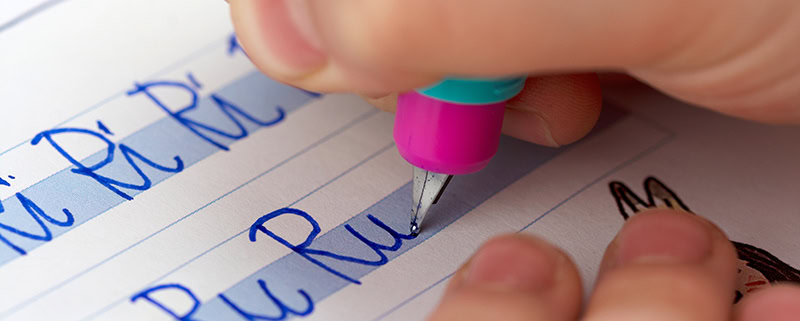Why we continue to teach cursive writing in the foundation phase: A holistic approach to learning
In a world where emojis and GIFs have practically become their own language, it might seem a bit quirky that Think Digital Academy still champions the art of cursive writing in the foundation phase. Yes, typing and digital tools are super important (we love a good keyboard shortcut as much as the next person), but there’s something special about that loopy, flowing script that deserves a place in early education. So, why do we still make room for cursive amidst the pixels and screens? Let’s dive in!
Engaging both hemispheres of the brain (fancy, right?)
Cursive writing activates both the left and right hemispheres of the brain. Unlike typing, which can be somewhat mechanical, cursive demands that students integrate visual, motor, and cognitive skills in a dynamic process. The left hemisphere, responsible for logic and language, works in tandem with the right hemisphere, which manages spatial and creative tasks. This dual-hemisphere activation is vital for developing higher-order thinking skills needed for solving problems and coming up with the next big idea.
Randomness in letter formation encourages cognitive flexibility
Unlike the rigid world of typing, cursive is a bit unpredictable. In cursive, letters connect in unpredictable ways depending on their sequence, keeping our young writers on their toes. This aspect promotes cognitive flexibility, which is the ability to adjust thinking and behaviour in response to new, unexpected circumstances. Encouraging this skill early on prepares students to be better equipped for challenges that require adaptability and critical thinking.
Enhancing visual processing and pattern recognition (pattern pros)
Cursive writing enhances visual-spatial skills because students must recognise and replicate complex, flowing patterns. These patterns are often more nuanced than the blocky shapes of print writing, requiring greater attention to detail and improving their ability to recognise visual cues in various contexts. This boosts visual processing skills and sharpens visual memory, helping students become experts at noticing details and recognising patterns, whether they’re reading a story or solving a tricky math problem.
Developing motor planning and coordination (tiny gymnasts)
Writing in cursive is a full-on workout for those tiny muscles in the hand and wrist. Motor planning—how we think about and execute movements—is a key part of learning cursive writing. When students practice cursive, they engage in complex, fine-motor skills that require coordinated movements of the hand and wrist. The act of joining letters requires precision and foresight, which, over time, strengthens motor planning abilities. This can improve hand-eye coordination and fine motor control, both critical for various life skills beyond writing; making kids ready for all sorts of tasks—from tying their shoes to mastering the art of drawing the perfect circle.
Improving spatial awareness (a new superpower)
Spatial awareness refers to the understanding of the position of objects, including letters, in relation to one another. Writing in cursive demands that students manage the spacing between letters, words, and sentences carefully, a skill that helps them develop a strong sense of how things are arranged both on paper and in the world around them. This can later assist in fields that require an understanding of geometry, architecture and even design.
Supporting memory retention and recall (memory magic)
There is a growing body of research that suggests cursive writing can help students retain information better than typing. Writing by hand activates the brain in ways that enhance memory retention and recall. The kinesthetic action of shaping each letter creates a neural connection to the material being learned, deepening understanding and making recall easier. So, the next time your child remembers that tricky spelling word or math fact, you might have their cursive practice to thank!
Encouraging a mind-body connection (zen masters in the making)
The rhythmic nature of cursive writing brings a meditative quality to the activity, often fostering a sense of calm and focus. The coordination of thought with movement helps students develop a strong mind-body connection, a form of mindfulness that not only enhances learning but also helps reduce stress and improve attention spans. Win-win!
Conclusion
At Think Digital Academy, we’re all about nurturing the whole child—mind, body and spirit. Cursive writing is more than just a relic of the past; it’s a powerful tool for developing cognitive, motor and creative skills that will serve our students well into the future. Sure, technology is crucial, but balancing screen time with a bit of old-school penmanship gives our students a well-rounded toolkit to thrive in this ever-evolving multifaceted world.
Free trial
Why not try our online learning environment by enroling for our free 14 day trial.






